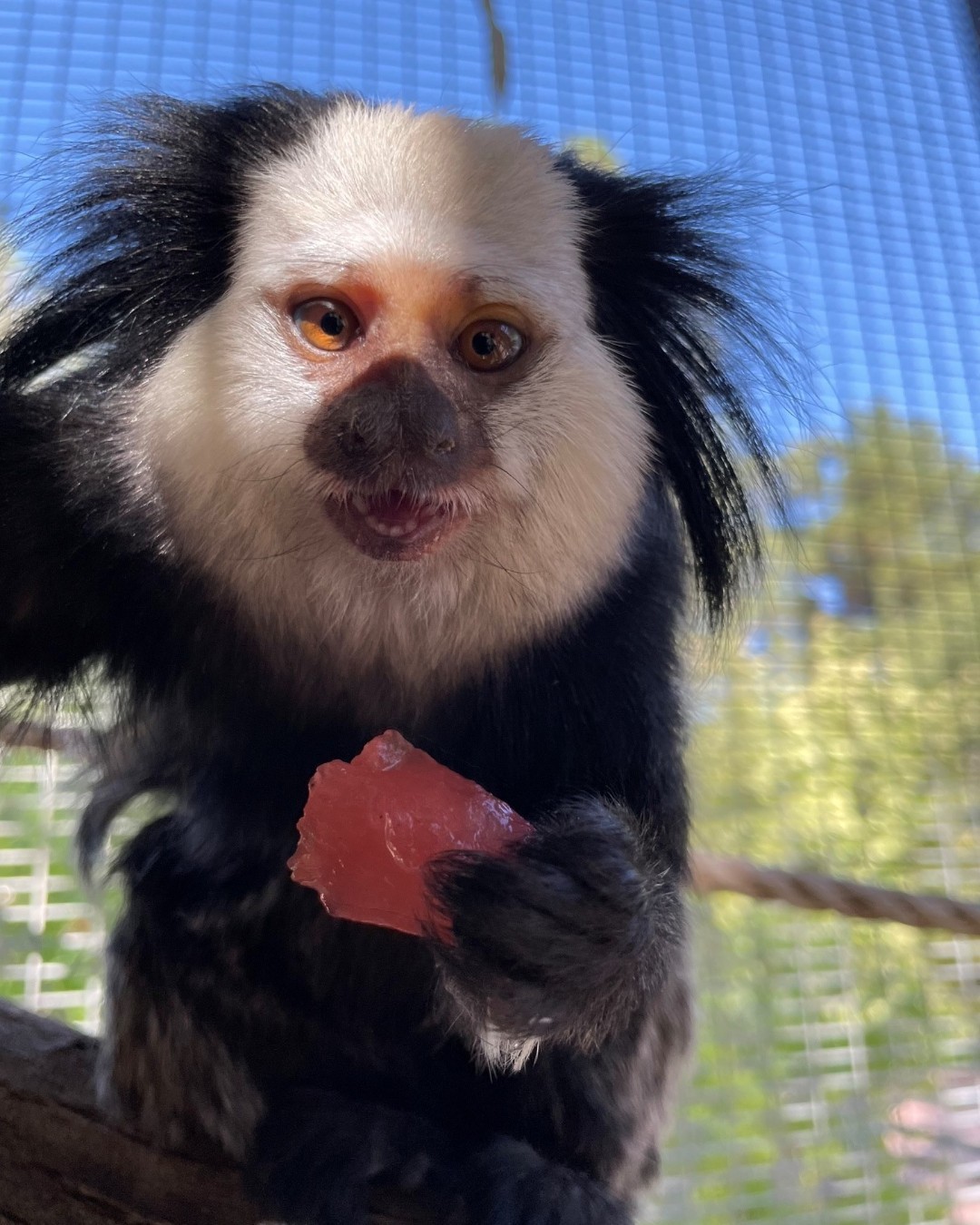- Euthanasia as a compassionate choice in zoo management
- The life and care of Geoffroy’s marmosets in captivity
- The role of animal keepers in wildlife conservation efforts
- The impact of social bonds on captive animals’ welfare
- The legacy of a zoo animal with a distinctive character
Humane euthanasia is a topic that brings a mixture of sorrow and solace. In zoo management, this decision is never taken lightly but is sometimes the kindest option for animals suffering from irreversible health issues. The practice reflects a commitment to animal welfare, ensuring that quality of life remains a top priority for wildlife in human care.
The female Geoffroy’s marmoset named Posh was a beloved resident of the Phoenix Zoo. Geoffroy’s marmosets, small New World primates native to the forests of South America, present unique challenges and rewards in a zoo setting. In the wild, Geoffroy’s marmosets live in social groups, and this aspect must be mirrored in captivity to promote natural behaviors and emotional wellbeing.
Zoos aim to offer animals like Posh a habitat and a home that caters to their physical, psychological, and social needs. Managing pre-existing medical conditions in such a species requires detailed knowledge of their natural history and behavior and specialized veterinary care. Despite her health issues, Posh thrived under the dedicated teamwork of the veterinarians and keepers at the Phoenix Zoo, living nearly twice as long as the median life expectancy for her species.
The role of zookeepers extends far beyond feeding and habitat maintenance. It encompasses the formation of close bonds with their charges. Keepers become attuned to the subtlest of cues about the animals’ health and mood, facilitating timely medical interventions and environmental enrichment. Posh’s resilience, her individual preferences for certain treats, and her enjoyment of activities like lounging in hammocks and inspecting her reflection showcase the intricate care provided by zoo professionals.
Notably, the social element in animal care is pivotal in ensuring overall well-being. Posh’s bond with her mate Tyson was a testament to the social complexities of Geoffroy’s marmosets. The pair’s dynamic, with Tyson protective and Posh assertively asserting her will, exemplifies the deeply rooted social instincts that captive care must respect.
Captivating tales of animals like Posh serve to educate and inspire zoo visitors about wildlife conservation. Each animal’s story is a doorway through which the public can engage with the broader narrative of ecological preservation, and the delicate balance ecosystems maintain.
Posh’s memory endures through the people she touched – a testament to how a single creature can symbolize the broader aim of zoos to foster an affectionate regard for nature’s diverse inhabitants. Her story emphasizes the importance of each individual within a species and their indelible mark on human stewardship of the natural world.
The decision to euthanize Posh was not made lightly. Still, with the gravity, such a choice deserves—a choice made with heavy hearts and reflective of the zoo community’s deep affection for a small monkey with a vast personality. This decision underscores a broader ethical stance within wildlife management, which prioritizes the well-being of each animal, recognizing when their quality of life is no longer sustainable.
Reflecting on Posh’s legacy, it is crucial to highlight the profound impact that zoo animals can have not just on their caretakers but also on society’s collective consciousness regarding wildlife conservation. Her story bridges the public and the often unseen, diligent efforts of those committed to the care and preservation of our planet’s biodiversity.
*****
Source Description
It is with a heavy heart that we share that we humanely euthanized our female Geoffroy’s marmoset, Posh, at the end of April due to continued health decline. Posh arrived at the Phoenix Zoo in 2014 with some significant pre-existing medical conditions that were managed for years by our dedicated veterinary and keeper staff. She was 14 years old and lived well beyond her expected life expectancy with several significant health abnormalities. The median life expectancy for this species is 7.4 years of age, so she had a good long life being cared for by all who knew her.
“Posh was a sweet, but tough, monkey who always held her own. This gritty spirit won the hearts of every keeper who worked with her, leading to a long list of nicknames: Poshy, Poshers, Posh Spice, Queen. Keepers aside though, she won over her mate, Tyson, immediately. The two shared a very tight bond, forming a relationship where Tyson would guard her at all costs, and she would get whatever she wanted. It wasn’t uncommon for her to chitter at him until he (significantly larger than her) left the area so she could have whatever treat he had been after – gum Arabic, black eyed peas, or grapes. Posh liked to lounge in hammocks, hang from perching like a gibbon, and look at herself in the mirror. She was the smallest animal on the trail with a huge personality, and she is sorely missed.” �- Amy and Debbie, Primate Keepers


